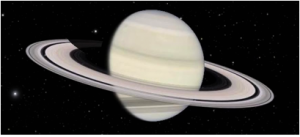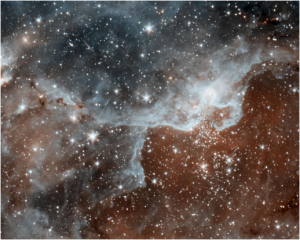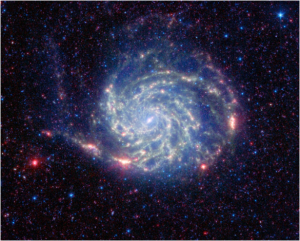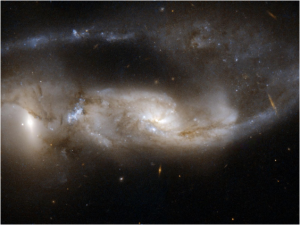Hawking, Time, and Sun Time Dilation
43rd and 155th page Sun Time Dilation
These discussions commemorate the passing of Professor Stephen William Hawking, age 76, on ‘pi day’ 2018, late of Cambridge, England. They are extracts of a letter sent in 2003 to the Professor reviewing portions of his book, A Brief History of Time.
Connecticut
January, 2003
Stephen Hawking, Professor
c/o Centre for Mathematical Sciences
University of Cambridge
Wilberforce Road
Cambridge CB30WA England
<s.w.hawking@damtp.cam.ac.uk
A Brief History of Time, 1988 Bantam Books, Dell
Professor Hawking,
With the previous discussion of the earth’s time dilation, this can be extended to the sun. Although life, as we understand it, cannot exist on the sun because of its heat, imagine anobject on the pole of the sun and another on the equator. Trying to remember astronomy measurements of a generation ago, I recall the sun rotates 3 times an earth day, or about every 8 hours [per Moore, pg 154, sun’s equatorial rotation is 25.4 days 30ix2003]. As its circumference is about 330 [Per Sir Patrick Moore’s ATlas of the Universe, page 155 sun’s diameter is 865k miles, earths diameter at page 43, is 2160 miles, so the sun circumference is400 times earth’s 30ix2003] times the earth’s this would mean the sun’s time dilation is 1,000 times faster than the earth’s. So the sun’s equator [should lose] loses an earth second every .3864 months (or 11.59 days, or 11 days, fourteen hours, nine minutes and 36 seconds). If the sun’s equator loses an earth hour every 114.3 earth years, and if it loses a month every 82,319 earth years, and if an earth year every 987,328 earth years (or about 1 million earth years) then what? So the age of the sun at 5 billion year] [consensus estimate) means the sun’s equator has lost 5,000 earth years, or the sun’s equator is 5,000 earth yearsyounger than the sun’s pole.
P.S. Time dilation.
The formula for time dilation is taken from The Teaching Company’s Physics video, and, as best I can tell, is as follows. “Distance = speed X time, so in Earth – star frame of reference, a trip takes: t = d/v = 10 light-years / .8 light-years/year = 12.5 years.”
PIA12164 nebula silky
“Time dilation: t’ = t \/(1-v^2), so in ship frame, trip takes:
t’=(12.5 years) \/(1-0.8^2) = (12.5 years) (0.6) = 7.5 years.”
I take the formula t=d/v to also mean d=tv, or to mean the distance (d) equals speed (v for velocity) multiplied by time(t), so in the Earth frame of reference, a trip takes: t = d/v.
The time dilation formula is t’ = t * square root of (1 minus (v/c)^2). (The v/c means the velocity divided by the speed of light (c), so as to give a percentage number which is squared.)
Seconds in a Year.
Since the speed of light is given in miles per second, I have to convert (enlarge) the speed to miles per year. There are 365 days in a year, each day having 86,400 seconds, or each year (of 365 days) having 31,536,000 seconds. For convenience 31,536,000 seconds can be written as 31 million, five hundred thirty six thousand seconds or 3.1536 * 10^7 seconds). Or: year = 3.1536 * 10^7 seconds, or
1 = 3.1536*10^7seconds / year = year /3.1536*10^7seconds.
Speed of C (light) in miles per year
Once I have the number of seconds in a year, I can multiply 3.1536 * 10^7 seconds/year by 186,000 miles/second (C) to get the (d) distance light travels in a year, or 5,865,696,000,000 miles.
C = 1.86*10^5 miles per second, so
1 = 1.86 *10^5 miles/second / C = 5.865696 *10^12 miles/year / C.
Hours in an earth Year
There are 365 earth days in an earth year, and each earth day has 24 earth hours, for 8,760 earth hours in an earth year.
The square root of equation – annual
I next have to calculate the number from which the square root will be obtained, or the square root of (1 minus Y^2). What is “Y”? Y is also a calculation, in the form of the percentage of the speed of light which compares the time dilation. In this example Y is the rotational speed of the earth at the equator (vEe) divided by the speed of light (C), or vEe/C.
Y = earth’s velocity at the equator divided by C (expressed as a percentage) = vEv/C.
Or,
Y = (8,760 hours/year * 1000 miles/hour) / 5.865696 *10^12 miles/year,
or 8.760/year * 10^6 miles / 5.865696 *10^12 miles/year, or 8.760 / (5.865696 * 10^6), or
8.760 / 5,865,696 or
Y = .0000014 = 1.4 * 10^(-6)
The square root of equation – seconds
Thus velocity at the earth’s equator is 28*10^(-2) miles/second (that is 1000Miles/hour / 3600 seconds/hour).
Earth’s equator spins at .277777 miles/second.
Earth’s equator’s spin as a percentage of the speed of light:
.277777 miles/second / 186,000 miles/second =
.277777 / 186,000 =
(.277777 / 1.86) * 10^-5 =
.277777 / 1.86 * 10^-5 = .1493387 * 10^-5 =
.000001493387 = 00.0001493387 percent of C.
Check. To check that I have not missed a decimal place, we can look to the speed of light as a percentage. Thus, 186,000 miles per second equals 100% of the speed of light (C).
18,600 miles per second equals 1/10th or 10% of the speed of light.
1,860 miles per second equals 1/100th or 1% of the speed of light.
186 miles per second equals 1/1,000th or .1% of the speed of light.
18.6 miles per second equals 1/10,000th or .01% of the speed of light.
1.86 miles per second (6,696 Miles per hour) equals 1/100,000th or .001% of the speed of light.
.28 miles per second (1,008 miles per hour) equals 1/350,000th or
.00015% of the speed of light.
.186 miles per second (669.6 miles per hour or 88% of Mach 1 or
speed of transoceanic jet travel) equals 1/1,000,000th or .0001% of the speed of light.
Earth’s velocity at the equator as a percentage of C, the speed of light, is .00015%.
PIA10968 spiral bead lights blue NGC 101
Calculation of Y in the Time Dilation formula
1 = .00015%*C/Y = 1.5 *10^(-4)*C/Y.
So Y^2 = (v/c)^2 = (.00015)^2 = (15*10^-5)^2 = (225*10^-10) =
2.25*10^(-8).
The number, Y^2, which is subtracted from One is .0000000225. If my calculations are correct, then the time at the equator shortens at a ratio of 2.25*10(-8).
Square root Time dilation calculated
(.00015)^2 = [15 * (10^-5)]^2 = [225 * 10^-10] = [2.25 * 10^-8]
1 – [2.25*10^(-8)] = .9999999775. The formula requests the square root of .9999999775, which is .999999993 or 9.99999993 * 10^-1.
Notice the square roots of numbers less than one [N<1] can actually be larger than the number for which the root is calculated. Or, because the numbers, from which the root is derived, are less than one, the product of two numbers can be less than either number individually. For instance the .9486832^2 is .8999998, so .9486832 is the square root for .9, even though .9 is less than .9486832. This is counter intuitive, as I expected the root, to be less than the product, because I am more familiar with integers than percentages, or fractions. Another and easier example is (1/10)^2 = 1/100, and 1/10 is ten times larger than 1/100.
The number .999999993 means the equator loses about 1 earth second every billion earth seconds.
Lose a second
So, remembering there are about 31 million earth seconds in an earth year (3.1536 * 10^7 seconds/year). We can calculate how many earth seconds are in an earth century by multiplying numerator and denominator by 100: = 3.1536 *10^9 seconds/100 years. There are about one billion seconds every 32 years and 2 months.
1*10^9 seconds / 3.1 * 100 years = 1*10^9 seconds/32 years & 2 months.
Significant Digits
All these calculations are also affected by the rules for significant numbers, meaning if one place holder is all there is for a portion of the calculation, the result can only have one place holder. This is a part of the law of rounding. Meaning a rounded Y would equal one, so the negative of one added to one would give a multiplier of zero and the time dilation would be zero. But intuitively, if the formula for time dilation is correct, the equator has to lose some time because of the longer distance it travels.
per Sir Patrick Moore’s atlas, page 154, Sun’s velocity around center of Galaxie is 140 miles per second, Moon’s mean orbital velocity is 2286 miles/hour (page 43), earth’s mean orbital
velocity is ?, venus mov is 21.76 mi/second (p. 70).
Professor Hawking’s mother was Scottish. His grandfather was James Walker born Glasgow and son of Archibald Walker Jr. and Janet Audrey Margaret Morris. Archibald was the son of Archibald Walker Sr. and Isobel McIntyre Ewing. Janet was the daughter of William John Morris and Margaret McGregor. Hawking’s mother’s mother was Elisabeth Agnes “Nancy” Stevenson Law, born Glasgow, and daughter of Andrew Law and Agnes Stevenson. Agnes was the daughter of Robert Stevenson who was married 6 August 1852 in Melrose, Roxburgh, Scotland to Isabella Hyslop.
Stephen William Hawking, born 8 January, 1942 in Oxford, Oxfordshire, England, U.K. Deceased: 14 March, 2018 ‘pi day, 3.14,’ in Cambridge, England, U.K.
PIA10393 merging galaxies
Cosmic images
https://www.jpl.nasa.gov/spaceimages/wallpaper.php
Utah Standard News depends on the support of readers like you.
Good Journalism requires time, expertise, passion and money. We know you appreciate the coverage here. Please help us to continue as an alternative news website by becoming a subscriber or making a donation. To learn more about our subscription options or make a donation, click here.
To Advertise on UtahStandardNews.com, please contact us at: ed@utahstandardnews.com.






Comments - No Responses to “Hawking, Time, and Sun Time Dilation”
Sure is empty down here...